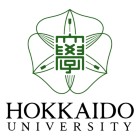
Early-stage tumours in the gastrointestinal tract can often be removed using a special endoscope, eliminating the need for major surgery.
When detected early, gastrointestinal tumours and lesions can be removed by passing an endoscope — a long tube equipped with a light and tools to remove polyps and tissue — in through the mouth or anus.
While this is considered a safe, non-invasive treatment for early-stage cancers, the wounds (ulcers) it produces can bleed after the procedure. And occasionally the operator may accidentally perforate the wall of the gastrointestinal tract, necessitating emergency surgery.
In an attempt to mitigate these risks, two researchers in Japan have developed a unique form of injectable collagen gel that could be an effective dressing for gastrointestinal wounds1,2.
The gel is designed to flow down the endoscope tube as a liquid and then to form a gel, hardening over the wound as it warms up inside the body. It could be a possible dressing for gastrointestinal ulcers, and though it has only been tested in animals so far, it may be possible to use it in endoscopic and surgical procedures in humans.
Wound-healing power
“This is a non-invasive, highly efficient way of sealing post-procedural wounds,” says Toshio Uraoka, a professor at Gunma University Graduate School of Medicine in Maebashi, Japan. “Our experiments on animals have shown that the gel is capable of sealing and speeding up the healing process for ulcers, and it can even fill perforations in the stomach or large intestine.”

A system for administering collagen gel through an endoscope to seal wounds during endoscopic procedures.
The concept of injectable gels is not new — many attempts have been made to create viable wound dressings from two main types of gels.
In physical gels, the polymers used to create the gel are physically connected. This type of gel changes state from liquid to gel responding to body temperature, and is suitable for carrying living cells to a target. However, such gels are mechanically weak, and scientists have struggled to use them to completely seal tissues.
In contrast, chemical gels, which are based on a mixture of polymers and compound cross-linkers, are mechanically stronger, but not temperature responsive.
A gel with a difference
Now, Uraoka and Shunji Yunoki, a professor at Hokkaido University, Sapporo, Japan, have developed a physical gel with an important difference.
“We used a chemical compound called genipin, which is derived from the cape jasmine plant, as a cross-linker to connect the collagen molecules together,” says Yunoki.
The mixture of collagen and genipin is a liquid at room temperature, but on coming into contact with the ulcer, it becomes a gel as it warms up to body temperature. It then undergoes a second-stage of gelation as the genipin cross-linkers are activated, causing it to harden further.
“To our knowledge, this two-stage, collagen-based gel is the first of its kind,” says Uraoka.
Furthermore, the injectable collagen gel is non-toxic, biodegradable and absorbable, so that it gradually disappears while the body heals the wound.
The researchers hope to progress to human trials in the next two to three years.
“I hope to prove the usefulness of this biomaterial as an agent for a variety of endoscopic and surgical procedures,” says Yunoki. “For example, it may be possible to use this gel in repairing cartilage damage.”




 Nature Index Health Sciences 2024
Nature Index Health Sciences 2024